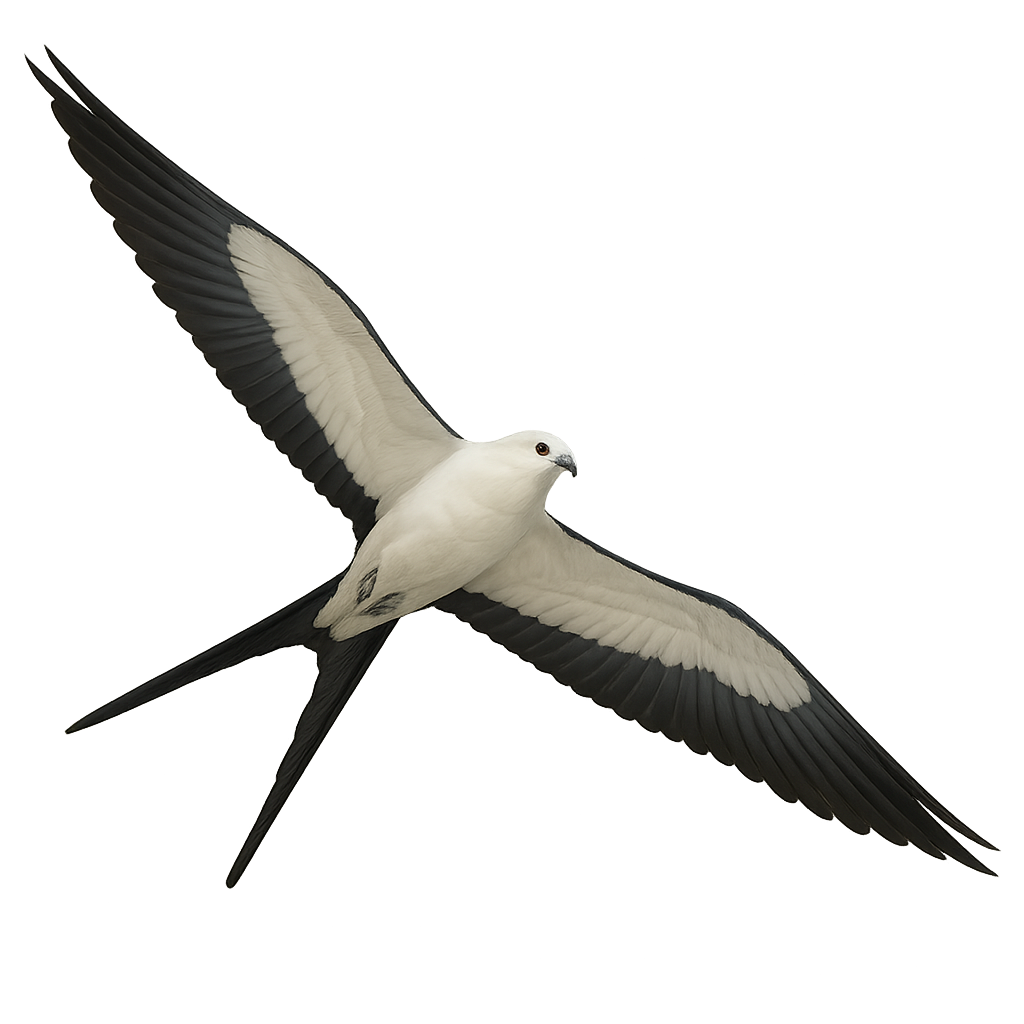Your wildlife photography guide.
Explore the swallow-tailed kite in detail, study its behavior, prepare your shots.
Where to observe and photograph the swallow-tailed kite in the wild
Learn where and when to spot the swallow-tailed kite in the wild, how to identify the species based on distinctive features, and what natural environments it inhabits. The WildlifePhotographer app offers tailored photography tips that reflect the swallow-tailed kite’s behavior, helping you capture better wildlife images. Explore the full species profile for key information including description, habitat, active periods, and approach techniques.
Swallow-tailed Kite
Scientific name: Elanoides forficatus

IUCN Status: Least Concern
Family: ACCIPITRIDAE
Group: Birds
Sensitivity to human approach: Suspicious
Minimum approach distance: 10 m
Courtship display: March to April
Incubation: 28-31 jours
Hatchings: April to May
Habitat:
Marshes, riparian forests, grasslands
Activity period :
Primarily active during the day, with peak activity in the morning and late afternoon.
Identification and description:
The Swallow-tailed Kite is an elegant and graceful raptor, easily recognizable by its long forked tail and black-and-white plumage. It is often seen soaring effortlessly in the skies of subtropical and tropical regions of the Americas. This bird of prey primarily feeds on insects and small vertebrates, which it catches in flight. Known for its impressive migrations, it travels long distances between its breeding grounds in North America and its wintering areas in South America. The Swallow-tailed Kite prefers open habitats such as marshes, riparian forests, and grasslands, where it can easily spot its prey.
Recommended lens:
400mm – adjust based on distance, desired framing (portrait or habitat), and approach conditions.
Photography tips:
To photograph the Swallow-tailed Kite, it is advisable to use a 400mm lens or longer to capture detailed images of this bird in flight. Find an open area where you can observe the sky without obstructions. Be patient and wait for the bird to glide within a reasonable distance. Use a tripod to stabilize your camera and track the bird's movement with continuous focus mode. Take advantage of the golden hours in the morning or afternoon for soft and flattering light.
The WildlifePhotographer App is coming soon!
Be the first to explore the best nature spots, track rutting seasons, log your observations, and observe more wildlife.
Already 1 429 wildlife lovers subscribed worldwide

